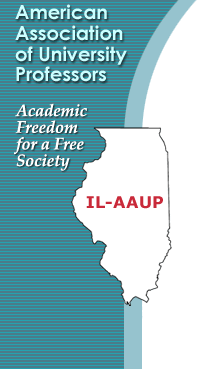 |
|
Salary Survey
Dear AAUP Colleague,
Salaries for full-time faculty members at American colleges and universities continue to recover slowly from the ongoing recession in higher education, but the longer-term trends are not promising. That’s the finding in this year’s annual report on faculty compensation and the economics of higher education (http://www.aaup.org/reports-publications/2012-13salarysurvey) issued by the American Association of University Professors.
AAUP director of research and public policy John W. Curtis, the lead author of this year’s report, says “the news this year is not all gloomy, but the silver lining is not exactly gleaming, either.” For full-time faculty members, after three consecutive years of increases in average salary levels that lagged behind inflation, the overall increase this year (1.7 percent) is just barely on par with the increase in prices. It’s not that faculty salaries rose more rapidly during the last year, but the inflation rate was low enough to keep them from losing any further ground. Full-time faculty members who remained at the same institution as last year received average salary increases that were also somewhat better this year than in recent years (3.2 percent) but still well below the level of average increases over the last ten years. Overall salary increases for faculty members at public colleges and universities continued to lag behind those at private institutions.
The report provides current data collected by the AAUP on salary and benefits for full-time faculty members at more than 1,100 colleges and universities. It also presents in-depth analysis of three perennial concerns and provides new data on each: The continuing rise of contingent (non-tenure-track) employment for faculty members, the sharp decline in state appropriations for higher education even after the end of the Great Recession in the broader economy, and the growing salary disadvantage for faculty members teaching in the public sector.
The large majority (76 percent) of college and university instructional appointments across the nation are now contingent: full-time faculty members off the tenure track, part-time faculty members, and graduate student employees. The AAUP report provides an update on the overall employment trend and a recap of important data on part-time faculty pay released in the last year. The Coalition on the Academic Workforce (CAW), of which the AAUP is a founding member, issued a report last year that found part-time faculty members earned a median of $2,700 for teaching a three-month course.
This year’s report provides an entirely new analysis of compensation and working conditions specifically for full-time non-tenure-track faculty members, also derived from the CAW survey. The majority of new full-time faculty appointments have been off the tenure track for two decades now, but the category has previously been defined mostly by what it is not. The new analysis finds that full-time non-tenure-track faculty members earned a median academic year salary of $47,500 in fall 2010, similar to the pay of entry-level faculty members found in the AAUP data for that year. The difference, however, is that non-tenure-track faculty members have only limited-term appointments that do not constitute a career path, and they struggle with some of the same inadequate support for quality instruction faced by part-time faculty members. The report looks at four aspects of support aside from salary and benefits.
Two further public policy issues affecting higher education are included in the report: state appropriations and the pay disadvantage for public-sector faculty. The report includes a state-by-state analysis of changes in higher education appropriations during the recessionary period. The totals across all 50 states show an 18 percent decline in higher education appropriations between 2008 and 2013, but there are wide variations.
Finally, the report provides a new depiction of the continuing salary disadvantage for faculty members in the public sector. The AAUP data for 2012-13 indicate that full-time faculty members teaching at public colleges and universities earn 7 to 35 percent less than their colleagues in comparable positions at private institutions. This difference accumulates over the course of an academic career, and makes it increasingly difficult for public institutions to hire and retain the best faculty members.
The salary disadvantage experienced by faculty members at public colleges and universities, and the continued growth in exploitative contingent employment practices, are thus matters of significant public policy. The disinvestment from fully supported and compensated faculty positions in the public sector means that the majority of students will be deprived of the most engaged instructors and mentors. Elected leaders consistently proclaim that investing in higher education is a state and national imperative, yet the data on state appropriations and public-private faculty salary disparities belie these proclamations. Public officials need to hear from their constituents about the value of higher education, and, importantly, about the critical role of faculty members in providing that education.
The complete report (including the institutional listings of average salary by rank and gender and aggregate tables for comparison) is available on our website, and AAUP members will also receive a hard copy of this year’s report in the mail as part of their member subscription to Academe. Non-members may order a copy by visiting the online AAUP store (http://www.aaup2.org/store.htm) for $95.00 or calling (202) 737-5900.
If you have questions, comments, or suggestions about this report, please let us know (aaupfcs@aaup.org). This is always a busy time of year, but we try to respond to every message. We look forward to hearing from you.
|
|


